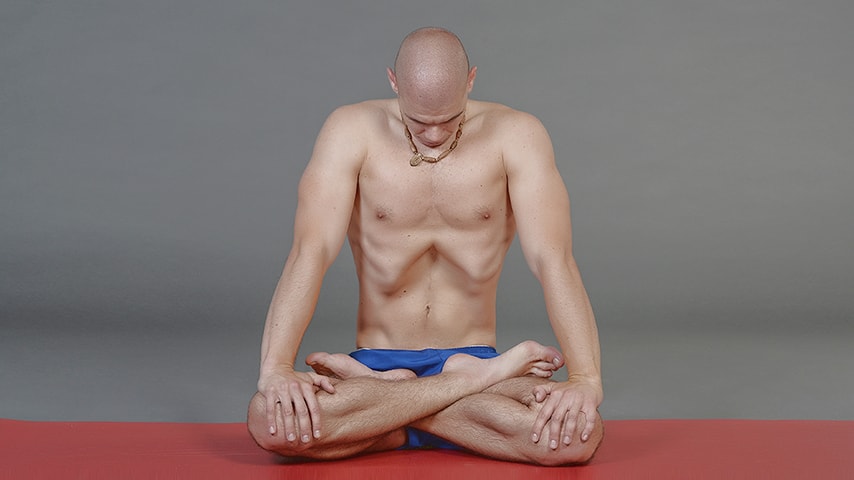
Bandh: The energy lock system within
Bandh helps in locking the vital energy in the body that can be redirected to rejuvenate organs and systems and also helpful in spiritual awakening.
Introduction
We have witnessed in different martial art disciplines that how with impulse and momentum; energy could be transformed to break the layers of bricks with our bare hand. This external channelization of energy to one point produces so much force which results in execution of this arduous task. Energy pervades in our entire body which could also be channelized internally from certain cardinal regions to rejuvenate organs or systems related to them. The saints of holy land, India through profound study, meditation, contemplation and experience found that if a practitioner applies bandh on these cardinal regions, pranic energy could be channelized to different parts of body internally.
The word Bandh (बंध) came from Sanskrit language which means to lock, tighten or limit. They are the yoga techniques that signify lock or with awareness confinement of the pranic power so that our energy generated during yogic kriyas or asanas should not escape out in the environment and could be utilised to maintain the optimal functions of the glands, systems and the body. Thus bandh became the integral part of many asanas and pranayama especially the one involving kumbhaka. There are mainly three types of bandhs i.e. mool bandh, uddiyan bandh and jalandhar bandh which are applied individually or in combinations during yogabhyas or all three bandhs can be applied together forming maha bandh. For a beginner bandhs could be learned individually and later they could be incorporated with the required asanas for deeper practices.
Peeping into types of bandhs
Here we have touched only the cardinal regions where the bandhs are applied. Each bandh has to be understood individually for their practice.
- Mool bandh: The word mool (मूल) means “base” (आधार) and bandh (बंध) denotes “lock” ( ताला लगाना). As the name suggests mool bandh is the process of applying the lock at the base (anus) of the yoga seekers to check the out flow of energy.
- Uddiyan bandh: Uddiyan signifies “flying up”(ऊपर उड़ना ). Uddiyan bandh is executed on navel region(नाभि) to ensure that the energy flows in the upward direction.
- Jalandhar bandh: Jalandhar means the “water bearer”. This bandh is executed by locking chin (ठुड्डी) against the throat (कंठ/water bearer) in the supraclavicular fossa.
- Maha bandh (महा-बन्धः बंध त्रय या त्रिबंधासन): Maha means great (महान) therefore the Maha bandh can be called as “the great lock”. Also known as tri bandh, it's not a another type of bandh. Rather if we perform three of these bandhas collectively it is called as maha bandh or tri bandh. By applying maha bandh we get the benefit of all three bandhs at the same time and besides that maha bandh results in better concentration of mind. A sadhak needs to have a good practice of kumbhaka i.e. breath retention for performing maha bandh.
Start learning bandhs
One of the easiest techniques by procedure is of bandhs but holding onto bandh for long duration makes the situation tough. And in case of bandh the longer is the period the better and deeper are the results. As literally bandh means to lock, for proper bandh the lock has to be stiff and tight. Just imagine that you holding thousand bucks in your hand and somebody tries to snatch it from you. To protect your hard earned thousand bucks you gonna hold it in your fist so tightly that upper part of your wrist also becomes stiff. So is the theory of bandh that the area near the cardinal regions will also feel the stiffness during its execution. Although bandh are favourably safe to practice but any negligence could cost you too. Therefore understanding the proper procedure and sequence of bandh becomes important. Precautions for specific bandh are for those who suffering from some disorder and should seek a guidance of a guru for the practice. Nevertheless a beginner can start the practice from any of the bandh.
Generally I recommend to start the practice of bandh from mool bandh as it form the basis of meditation asanas, is essential in pranayama practices especially during kumbhaka and also touches the kundalini shakti at the base i.e. mooladhara chakra. Simultaneously to start the practice with uddiyan bandh is also an equally good option and especially for a sadhak who has digestive disorders, liver problems or problems related to pancreas. Anything that put our digestive fire back to work and makes us light on stomach, helps in immediate rejuvenation of energy within. But those who are obese and could not apply uddiyan bandh or sit in crossed leg asanas for mool bandh or especially those suffering from thyroid are suggested to start the practice from jalandhar bandh. Once a sadhak has become skilled in applying all these three bandhs, he/she can go for Maha bandh which results in higher concentration and higher consciousness.
Things to keep in mind
- Like other yogic kriyas and asanas, bandhs also follows the morning discipline.
- Bandhs are performed on an empty stomach. Those who suffers from constipation and feel that they can be better empty stomach in the evening, can do bandhs practice then.
- Although you need to hold tight at the cardinal regions where bandh are imposed but keep in mind not to stress your body and mind unnecessary.
- Bandhs are practiced while sitting in dhayanatmak asanas i.e. meditation asanas or crossed legged asanas. Practicing in padmasana delivers the maximum benefits of bandhs and vice versa it increases the benefits of padmasana too. If you are not able not sit in padmasana then you can practice bandh by sitting in any crossed legged asana and padmasana separately.
- Eyes should be closed while doing bandhs and after relaxing the lock (bandh) you should sit in your asana for a while with closed eyes and observe your breath.

Add a comment